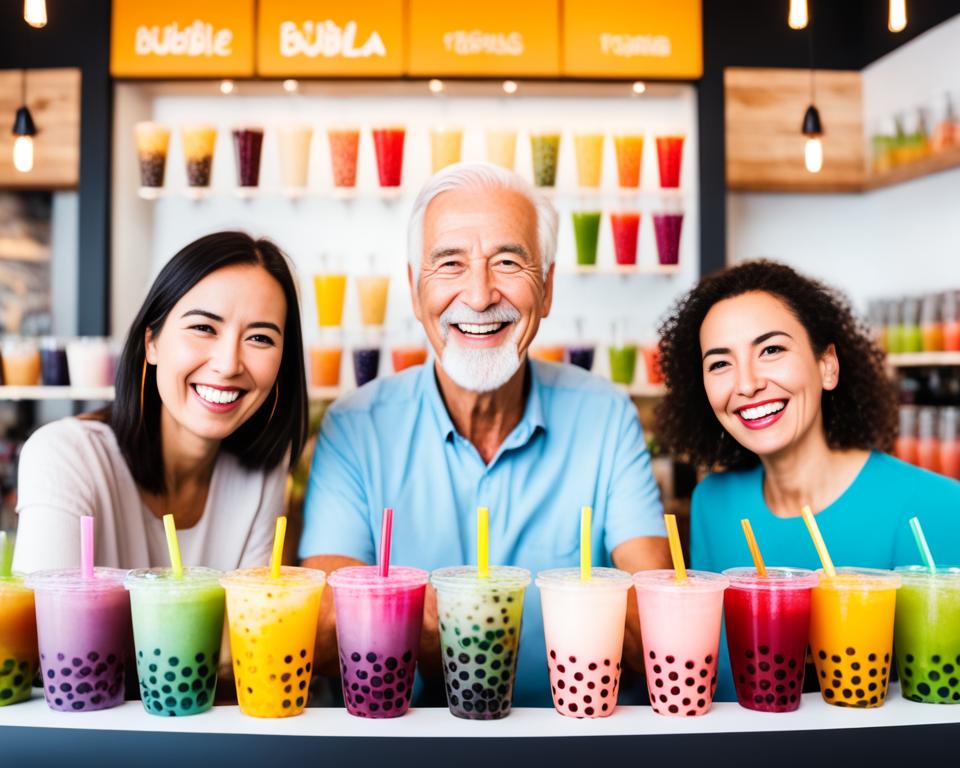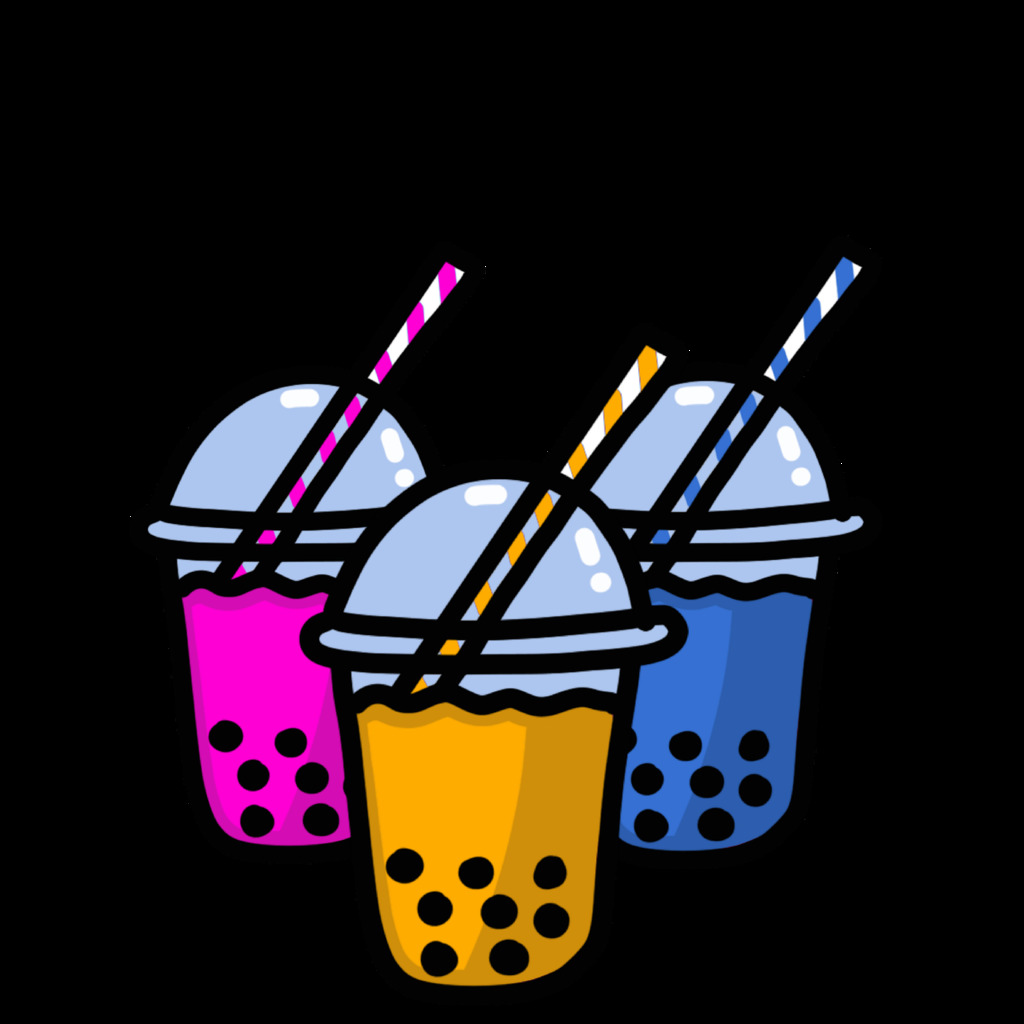The bubble tea craze has swept across the globe, captivating the hearts—and taste buds—of millions. Its unique concoction of flavors and textures not only provides a delectable escape from the everyday but also embodies a cultural phenomenon that speaks to the joy of culinary exploration. The bubble tea appeal lies not just in its refreshing taste but also in the experience it delivers; every sip promises a sweet adventure sprinkled with chewy tapioca pearls that have become synonymous with fun.
Why do people love bubble tea? It’s the combination of indulgence and novelty, coupled with the ability to customize it to one’s own palette that keeps fans coming back. Stunning in a glass and irresistible in flavor, bubble tea continues to win admirers, making it more than just a beverage—it’s a lifestyle in a cup.
Key Takeaways
- Explore the reasons behind the global bubble tea appeal.
- Understand the cultural impact that has fueled the bubble tea craze.
- Uncover the personalization that makes bubble tea a beloved beverage.
- Discover why people love bubble tea and its unique contribution to the drink industry.
- Appreciate the perfect blend of fun and flavor that defines every bubble tea experience.
The Origins of Bubble Tea and its Global Popularity
The humble beginnings of bubble tea can be traced back to Taiwan in the 1980s, where this unique beverage started as a simple street-side concoction. But it wasn’t long before Taiwan’s bubble tea became a global bubble tea trend, winning hearts with its sweet, creamy taste and fun, chewy tapioca pearls. Let’s embark on a journey exploring the bubble tea history and highlight the pivotal moments that took this Taiwanese treat to the international stage.
Tracing the History of Bubble Tea from Taiwan to the World
In Taiwan, the story of bubble tea began with an innovative blend of tea, milk, and fruit flavors, dramatically enhanced by the addition of chewy tapioca pearls. It rapidly gained popularity, moving from local tea shops to the bustling streets, where it became emblematic of Taiwan’s vibrant food culture. Let’s look into the timeline of how Taiwan’s bubble tea asserted its presence worldwide.
| Year | Event | Impact |
|---|---|---|
| 1980s | Inception of Bubble Tea in Taiwan | Birth of a new trendy beverage in Taiwanese night markets |
| Late 1990s | Introduction in the United States | First wave of international exposure, targeting Asian-American communities |
| 2000s | Expansion across Asia | Bubble tea becomes a staple in neighboring countries such as China, Japan, and South Korea |
| 2010s | Globalization of Bubble Tea | Emergence of global franchises, highlighting the international acceptance of the beverage |
| 2020s | Adaptations and Innovations | Introduction of new flavors and dietary options, further cementing its place in the global market |
Why Bubble Tea Has Captured International Attention
What began as a local Taiwanese specialty has captivated people across continents, turning the global bubble tea trend into a phenomenon. The allure of bubble tea goes beyond its taste; it’s also about the experience. The versatile flavors, the joy of customizing your own drink, and its Instagram-worthy visuals have all played a role in bubble tea’s enduring popularity. But what exactly about bubble tea history and its evolution has made it so irresistible to an international audience?
- Cultural Fusion: Bubble tea represents a modern blend of Eastern and Western food cultures.
- Customization: The ability to personalize bubble tea with various levels of sweetness, types of milk, and toppings.
- The ‘fun factor’ associated with the tapioca pearls and the wide array of vibrant, colorful options.
“Bubble tea isn’t just a drink; it’s an experience that brings a taste of Taiwanese culture to the world, one sip at a time.” – Beverage Expert’s Insight on the International Appeal of Bubble Tea.
Exploring the Unique Ingredients of Bubble Tea
At the heart of bubble tea’s irresistible allure lies a diverse array of bubble tea ingredients that blend tradition with modern twists. Central to this delightful beverage’s performance are the iconic tapioca pearls, which not only give bubble tea its signature chewy texture but also its playful character.
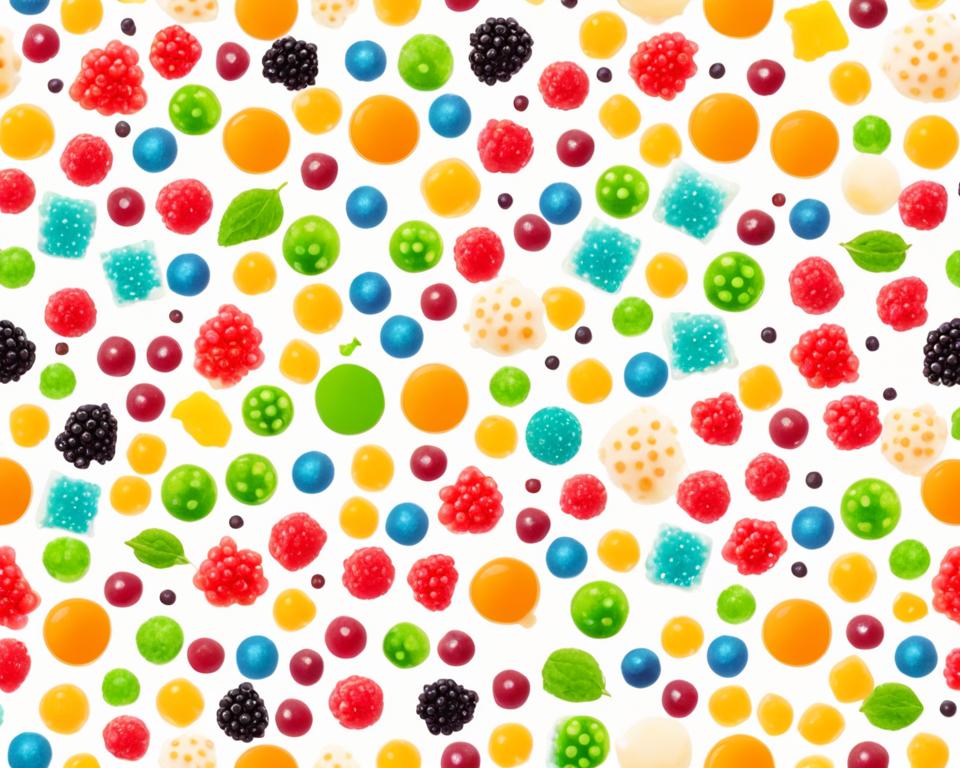
Traditional bubble tea recipes start with a tea base—black, green, or oolong, which are brewed to the perfect strength to balance the sweet and creamy elements to follow. Milk or a non-dairy alternative adds a luxurious creaminess, while the choice of sweetener—be it classic syrup, honey, or agave—lends the drink its sweet profile. In the realm of bubble tea, customization is king, making room for ingredients such as almond milk or soy for those with dietary preferences.
- Tea Base Varieties: Black, Green, Oolong, Herbal
- Custom Sweetness: Syrup, Honey, Agave, Brown Sugar
- Milk Alternatives: Almond Milk, Soy Milk, Lactose-Free Options
- The Star Ingredient: Tapioca Pearls, aka ‘Boba’
- Dietary Accommodations: Agar Pearls, Fruit Jellies, Popping Boba
Emphasizing variety and flexibility, bubble tea offers an ingredient for every palate and preference. Whether you’re in pursuit of the authentic experience with tapioca pearls or seeking something unique like agar pearls and fruit jellies, bubble tea doesn’t just quench your thirst—it delivers a personalized taste adventure.
Breaking Down the Bubble Tea Flavors Spectrum
As bubble tea continues to enchant taste buds around the world, its range of flavors remains one of the most exciting aspects of this phenomenon. With a foundation of classic bubble tea varieties that have captivated enthusiasts, the industry has not shied away from introducing innovative bubble tea blends, each offering a new experience.
Classic Flavors That Started it All
The traditional bubble tea flavors, often referred to as the classics, are the cornerstones of the bubble tea menu. They include the timeless Milk Tea, Thai Tea, and Taro. These flavors have been savored by generations and serve as a comforting reminder of bubble tea’s humble beginnings. Classic bubble tea varieties offer a nostalgic savor, inviting bubble tea aficionados to reminisce with every sip.
- Milk Tea: The original fan-favorite known for its creamy, sweet profile.
- Thai Tea: A spicier twist with its signature orange hue and aromatic spices.
- Taro: Sought after for its unique, nutty flavor and vibrant purple color.
The Advent of New Innovative Bubble Tea Tastes
Building on the foundation laid by the classics, innovative bubble tea flavors challenge the status quo, introducing an array of distinct and unexpected tastes. From the incorporation of fresh fruits to the use of alternative sugars like agave and stevia, these inventive concoctions have sparked a trend towards personalization and exploration within the bubble tea world.
- Matcha Green Tea: Delighting with an earthy depth and rich antioxidants.
- Salted Caramel: A sweet and salty fusion that tantalizes the modern palate.
- Lychee: Offering a tantalizingly sweet and floral note for a refreshing twist.
Moving beyond the standard menu, elite bubble tea cafes now offer seasonal and special editions, integrating superfoods like acai and pomegranate, aligning with health trends without sacrificing flavor. As taste continues to evolve, so does the list of bubble tea flavors, promising adventurous journeys for both new and seasoned bubble tea lovers.
Texture and Sensation: The Role of Tapioca Pearls in Bubble Tea
Emerging as the star in the chewy bubble tea ensemble, tapioca pearls are more than just a topping; they’re the cornerstone of the bubble tea sensation. These tiny, starchy spheres harmonize the textures and flavors that make bubble tea a global favorite. Understanding the significance of tapioca pearls unveils why sipping this beverage transcends mere thirst-quenching—it’s an experience for the senses.
What Makes the ‘Bubble’ in Bubble Tea: Tapioca Pearls Examined
The journey of tapioca pearls from raw ingredient to bubble tea bliss involves careful selection and preparation. Derived from the cassava root, these pearls go through a meticulous process to achieve that perfect, springy chewiness—transformation from their native, powdery state into irresistible bubbles ready to be cooked and served.
Tapioca pearls bring a unique chewy texture to each cup, an attribute that has set bubble tea apart from other beverage trends. However, not all pearls are created equal. Factors such as size, color, and cooking time contribute to the ultimate satisfaction derived from each sip and chew.
Chewing the Texture – Why It’s Part of the Experience
The act of chewing on tapioca pearls while enjoying a bubble tea is not just an activity but rather an integral part of the experience. Bubble tea lovers worldwide have come to anticipate the delightful contrast between the smooth, creamy drink and the gummy consistency of the pearls. This combination of drink and chewable delight is crucial to the enduring appeal of the bubble tea sensation.
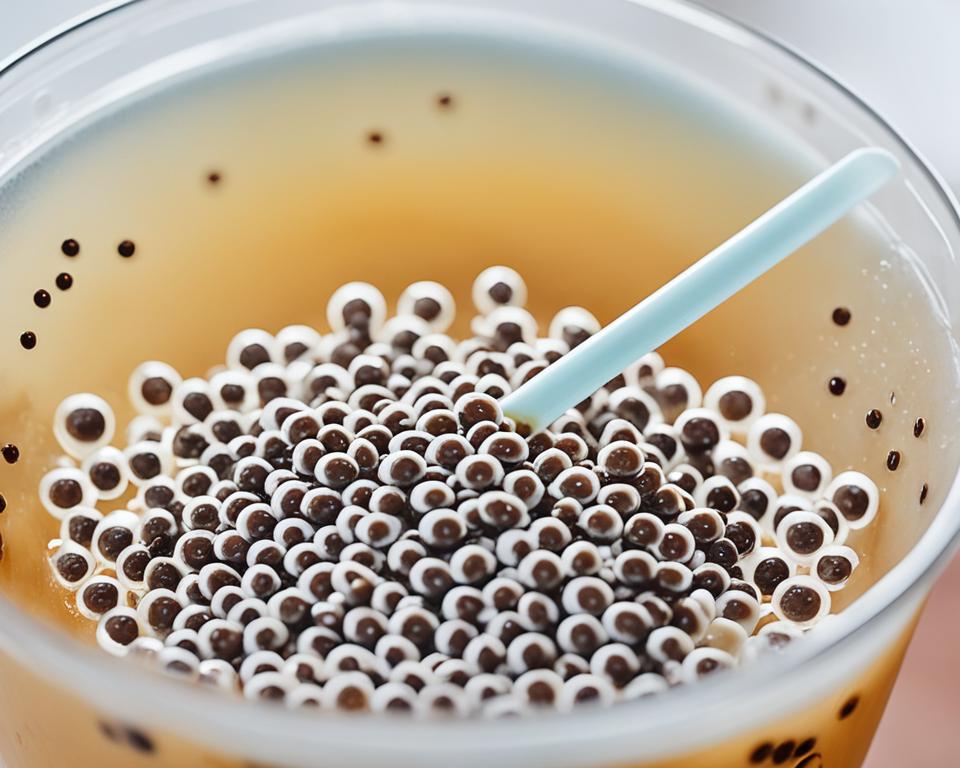
The appeal lies in the interactive aspect; the sensation of the pearls popping up through the straw, the tactile pleasure of rolling them around the mouth, and the unique chewiness they offer. It’s the playful interplay between drink and food that transforms the consumption of bubble tea into an indulgent ritual enjoyed globally.
“The pearls in a bubble tea aren’t just a gimmick; they are a carefully crafted element that offers texture and a touch of sweetness, perfectly complementing the flavor complexities of the tea itself.”
- Understanding Cassava: Origin of Tapioca Pearls
- The Process: From Tapioca Flour to Pearls
- Texture Profile: Achieving the Perfect Chew
- Cultural Phenomenon: Why Tapioca Pearls Make Bubble Tea Memorable
As this bubble tea component receives further innovation, tapioca pearls not only enhance texture but also contribute to the color and flavor diversity, broadening the scope of what can be expected from a cup of bubble tea. The chewy quality continues to define the bubble tea experience, offering aficionados a playful and satisfying sensation that elevates the simple act of quenching thirst into an immersive treat.
The Value of a Bubble Tea
When savoring a freshly prepared cup of bubble tea, it’s not just about quenching a thirst—it’s an experience. As we delve into what determines the bubble tea cost and its overall worth of bubble tea, it’s essential to consider both the tangible and intangible elements that contribute to its bubble tea value.
Understanding the Cost Behind a Cup of Bubble Tea
The price tag on your bubble tea is not just for the tea itself but a reflection of the diverse variables that compose it. From the geographic origin of tea leaves to the specificity of bubble tea recipes, every detail has its role in the final cost. The lavish range of ingredients, such as organic milk, exotic fruits, and artisanal syrups, can also adjust the price upward, depending on the complexity and rarity of the components involved.
Price vs. Experience: Evaluating Bubble Tea Worth
In assessing the worth of bubble tea, one must measure the sensory pleasure and personalization that the brew offers. Bubble tea isn’t just a beverage; it’s a customizable treat tailored to the individual’s taste. Whether opting for less sugar, dairy-free options, or an array of colorful toppings, this level of personalization enhances the value for many enthusiasts.
A summarized breakdown of what might contribute to bubble tea’s price is presented below:
| Component | Details | Impact on Cost |
|---|---|---|
| Quality of Ingredients | Organic tea leaves, natural fruit flavorings, fresh milk or milk alternatives. | Higher quality often equates to higher cost. |
| Tapioca Pearls | Traditional boba or variations like popping boba or crystal boba. | Specialty pearls can increase the price. |
| Customization Options | Level of sweetness, type of milk, additional toppings. | Each adjustment or addition can add to the final price. |
| Location and Brand | Prices can vary greatly depending on the establishment’s location and the brand’s market positioning. | Premium locations and brands often charge more. |
Ultimately, the bubble tea value transcends the monetary expense, offering a unique experience that is tailored, delightful, and memorable—characteristics that make its cost justifiable for aficionados around the world.
Customization: Making Your Bubble Tea Your Own
The beauty of custom bubble tea lies in the vast array of personalized bubble tea options it offers. Boba aficionados revel in the opportunity to craft a drink that is uniquely theirs, adjusting every element to fit their taste preferences. Whether it’s the sweetness level, the type of milk, or the toppings, the journey to creating your perfect bubble tea is both a personal art and a science.
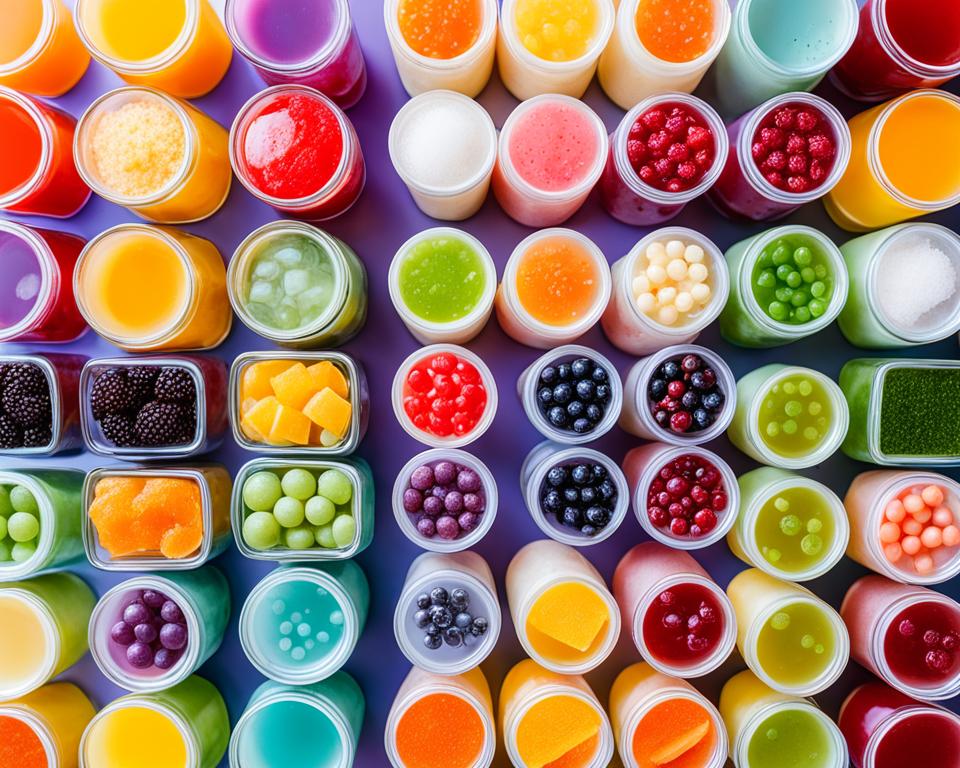
Let’s dive into the key areas where customization takes your beverage experience to the next level:
- Sweetness Adjustment: From unsweetened to extra sweet, you command the sugar levels.
- Milk Varieties: Dairy or non-dairy, the choice adds a distinct creaminess to your tea.
- Toppings Galore: Tapioca pearls, popping boba, grass jelly, and more to explore.
Bubble tea options extend beyond the drink’s base, allowing for a tailor-made experience that caters to individual dietary needs and flavor cravings. Here’s a table breaking down some of the choices available to bubble tea enthusiasts:
| Customization Category | Options Available |
|---|---|
| Base Tea | Black, Green, Oolong, White, Herbal |
| Sweetness Level | No sugar, 25%, 50%, 75%, 100% |
| Milk Selection | Cow’s milk, Soy milk, Almond milk, Coconut milk, Lactose-free |
| Bubble Variety | Tapioca pearls, Fruit jellies, Popping boba, Crystal boba, Cheese foam |
| Additional Flavorings | Fruit syrups, Purees, Powders, Extracts, Cream cheese |
| Ice Level | None, Easy, Less, Regular, Extra |
With such diversity in choice, creating a custom bubble tea becomes a fulfilling part of the bubble tea experience. It invites patrons to be adventurous, to mix and match, and to truly make each cup their own. This customization not only enhances the sensory enjoyment of bubble tea but also furthers its appeal, allowing everyone to find their perfect sip.
The Cultural Significance of Bubble Tea
As a vibrant part of daily life for many, bubble tea culture has evolved far beyond being just a trendy drink. Its unique flavors and customizable nature have made it a global bubble tea phenomenon, offering more than just a refreshing beverage—it symbolizes a contemporary, shared experience that resonates across different demographics and geographies. With its colorful presence and inviting aesthetic, bubble tea has become an iconic fixture within the modern bubble tea lifestyle.
Bubble Tea as a Social Phenomenon
Often seen in the hands of friends gathering for a catch-up or being enjoyed at chic, urban cafes, bubble tea is more than a drink—it’s a social connector. From its humble beginnings, it has grown to represent a trendy and inclusive aspect of youth culture. With its photogenic qualities, it often graces social media feeds, effectively becoming a staple for social events and an expression of identity among younger generations.
Integrating into Different Cultures and Lifestyles
Every sip of bubble tea is reflective of a beverage that has seamlessly blended into various cultural fabrics. Around the world, from East Asia to North America, and from bustling metropolises to quaint towns, bubble tea shops have become community fixtures. Here, we see a dialogue between tradition and innovation, as evidenced by the drink’s adaptation into a wide array of local practices and consumer habits.
| Country | Influence on Local Culture | Typical Bubble Tea Practices |
|---|---|---|
| Taiwan | The birthplace, with deep-rooted customs in enjoying and creating bubble tea. | Late-night takeaway from local boba shops. |
| United States | A symbol of trendy urban life with a penchant for customization and variety. | Customized orders with precise sweetness levels and dairy alternatives. |
| Japan | Integrated with Japanese tea practices and a focus on quality ingredients. | Tapioca pearls often paired with matcha and other traditional Japanese flavors. |
| Germany | Embraced as an alternative to coffee culture, particularly in urban centers. | Bubble tea enjoyed as a novel dessert drink option. |
Nutritional Aspects of Bubble Tea: What You Should Know
As the bubble tea craze continues to enchant taste buds worldwide, it’s essential to consider its nutritional profile. While renowned for its creamy taste and fun tapioca pearls, bubble tea’s caloric content is often an afterthought for many enthusiasts. However, understanding the nutritional impact of this beloved beverage can help you enjoy it responsibly and healthfully. In this section, we’ll take a balanced look at what goes into a typical serving of bubble tea and provide practical tips for those who want to relish this treat as part of a nutritious diet.
Caloric Content and Health Considerations
Bubble tea nutrition facts can be eye-opening. A standard serving can contain anything from 200 to 450 calories, with variations depending heavily on the choice of ingredients and portion sizes. Those milky flavors and sweet syrups, while delicious, contribute significantly to the overall calorie count. Health considerations, such as sugar content and potential additives, are also factors worth pondering. It’s essential to be mindful of these details, especially if bubble tea is more than an occasional indulgence in your lifestyle.
How to Enjoy Bubble Tea in a Healthy Way
To enjoy healthy bubble tea, consider customizing your order. Opt for less sugar or sugar-free alternatives, and swap out the creamer for plant-based milk to cut down on calories. Nutrition-conscious consumers can seek out shops that offer organic teas and natural sweeteners for a more wholesome version of the classic drink. The key to adding bubble tea into your diet without guilt is moderation; treat it as a special snack rather than a daily habit. By being informed and making savvy choices, you can balance the joy of sipping bubble tea with a commitment to your health objectives.
FAQ
What is bubble tea and why has it become so popular?
Bubble tea is a Taiwanese drink that combines tea, milk, flavorings, and tapioca pearls shaken together to create a frothy beverage. Its unique combination of flavors, textures, and the fun experience it offers has helped gain a passionate following, leading to its popularity worldwide.
Can you trace the origins of bubble tea?
Bubble tea originated in Taiwan during the 1980s and quickly spread to other countries, evolving into a global phenomenon. Its versatile flavors and the customizable nature of the drink contribute to its widespread appeal.
What are some classic bubble tea flavors?
Classic bubble tea flavors include milk tea, taro, and fruit-flavored teas like strawberry, mango, and passionfruit. These traditional flavors laid the foundation for the ever-expanding variety of tastes available today.
How has the flavor spectrum of bubble tea evolved over time?
The bubble tea flavor spectrum has evolved to include a range of innovative tastes, incorporating unique ingredients like matcha, hokkaido milk, and even savory options like cheese tea, reflecting ongoing innovation in the industry.
What role do tapioca pearls play in bubble tea?
Tapioca pearls, or ‘boba,’ are essential to bubble tea’s texture and identity. They add a chewy, playful element to the drink, which is a key part of the overall bubble tea experience.
Is bubble tea expensive and how can I assess its value?
The cost of bubble tea varies, but generally reflects the quality of ingredients and the complexity of preparation. Evaluating its value also involves considering the personalized nature of the drink and the enjoyment it provides.
What are some common ways to customize bubble tea?
Bubble tea can be customized by selecting the type of tea base, milk, level of sweetness, and the choice of tapioca pearls or other toppings such as fruit jellies or popping boba, allowing for a personalized beverage experience.
How has bubble tea integrated into different cultures and lifestyles?
As bubble tea spread globally, it has been embraced by diverse cultures, often serving as a social beverage at gatherings. It has adapted to various lifestyle needs, like offering healthier options, becoming a symbol of modern cosmopolitan culture.
What nutritional considerations should I be aware of when enjoying bubble tea?
Bubble tea can be high in sugar and calories, so it’s important to consider these factors for a balanced diet. Opting for less sugar, lower-calorie milk options, or smaller servings can help make bubble tea a healthier choice.

